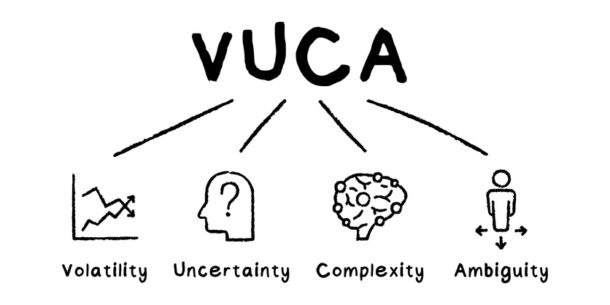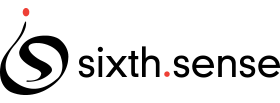
Leading in a VUCA Environment: Navigating Complexity with Agility and Vision
In a world characterised by volatility, uncertainty, complexity, and ambiguity (VUCA), leaders find themselves steering ships through turbulent waters, where change is not only rapid but often unpredictable. How can leaders foster stability and progress in a VUCA environment? Drawing on our experience, here are some ideas:
Visionary Leadership
We see this as being made up of two important facets:
A sharp focus
In volatile circumstances, a clear vision serves as a beacon, guiding teams towards organisational goals. Leaders should articulate a compelling vision, grounded in realism and optimism, thereby creating a culture of hope and forward momentum.
Adaptive Strategy
As the saying goes, even the best-laid plans often go awry. In a VUCA environment, leaders should foster a strategy that is flexible and can swiftly adapt to changing scenarios. Fundamental to this we believe is leaders acting in a way that creates and supports a level of psychological safety that encourages people to speak up with ideas, suggestions, and concerns.
Understanding the Organisational Landscape
Two leadership skills stand out above all others in this respect:
Empathic Communication
Leaders must prioritise understanding the concerns and perspectives of their teams. Active listening and empathic communication pave the way for a culture of mutual respect and collaboration and again, support psychological safety.
Situational Awareness
A keen understanding of the macro and micro environmental factors affecting the organisation is indispensable. Regular SWOT analyses can offer invaluable insights into the evolving business landscape. A heathy VUCA response can never involve ivory-tower thinking.
Complexity Mastery
We see two, deliberate OD principles as being key here:
Decentralisation
By decentralising decision-making as much as possible, leaders can facilitate swift responses to challenges, leveraging the collective intelligence of their teams.
Simplicity in Processes
While the external environment might be complex, internal processes should aim for simplicity and efficiency, mitigating complexity where possible.
Agility in Action
Paying attention to these factors feels vital in our experience:
Resilience
Building a resilient team that can bounce back from setbacks is vital. This involves adopting a growth mindset, where failures are seen as opportunities for learning and growth.
Creativity
Encouraging a culture of innovation, where team members are empowered to think out of the box and come up with novel solutions to problems is vital as is providing people with opportunities, tools and techniques to hone their creative skills.
Lifelong Learning
VUCA generally means rapid change, so staying ahead in terms of knowledge and skills is vital. A relentless focus on these disciplines should pay dividends:
Continuous Skill Development
In a rapidly changing environment, skill obsolescence is a real threat. Leaders should encourage continuous learning and development, facilitating the upskilling and reskilling of their teams. A siege mentality, where all discretionary spend on L&D is curtailed, is generally a harbinger of failure.
Knowledge Sharing
Promoting a culture of knowledge sharing, where learning is not siloed but is a collaborative, organisational endeavour has been shown for decades to underpin a healthy response to change.
In Conclusion
Navigating a VUCA environment requires a new kind of leadership, one that is visionary yet grounded, agile yet stable, and collaborative yet decisive. By fostering a culture of agility, understanding, and lifelong learning, leaders can not only navigate the VUCA landscape but can turn volatility, uncertainty, complexity, and ambiguity into opportunities for growth and development.
In conclusion, leading in a VUCA landscape is not about avoiding the chaos but mastering it, turning challenges into stepping stones for success. It is about building teams that are resilient, adaptive, and primed for the future, leading with vision and purpose in a world of constant change.

Start The Discussion